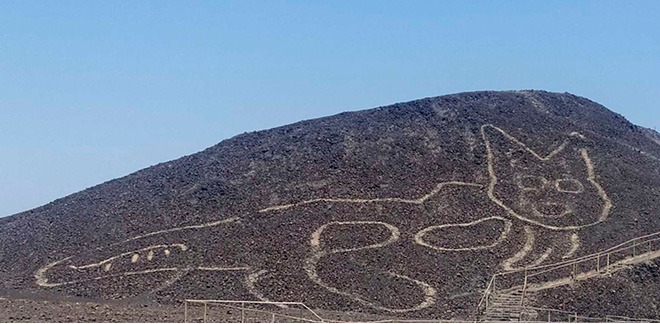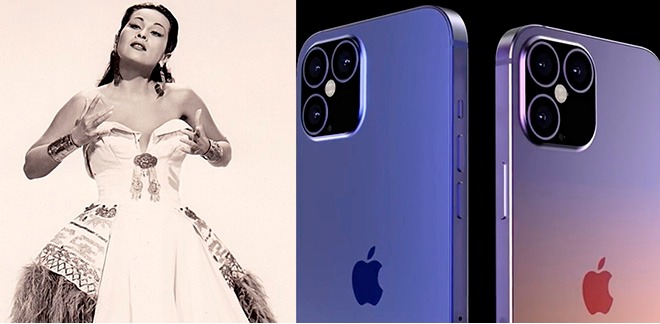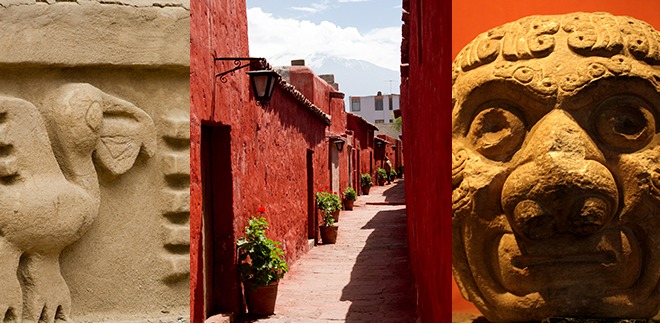Meet the Hairless Dog, a native Peruvian breed
Síguenos en:Google News
The Hairless Dog is a breed that is native to Peru and is an important icon of Peruvian culture. Its presence dates back to pre-Columbian times, appearing on the ceramics, painting and iconography of cultures such as the Chavín, Moche, Wari, Vicus, and Chimú cultures.
With an imposing and proud presence, the dog - also known in Peru as the ‘Calato’ dog, which means ‘naked’ in Quechua - has been depicted on ancient pottery for different uses and in everyday scenes such as childbirth and breastfeeding, showing that they were largely considered pets by the ancient Peruvians.
During the time of the Incas, this dog played an important role in Inca customs, rituals and traditions, as well as being thought to have healing powers. There is a drawing by the Peruvian chronicler Huamán Poma de Ayala in which a ‘Coya’ (the main wife of the Inca) with a Calato dog at her side as her pet.
A bit of history
While their existence dates back thousands of years, there was a moment in history when these creatures could have disappeared. In the sixteenth century, when this breed of dogs was very common along the Peruvian coast, the Spanish arrived; they saw these animals with prominent teeth and tongues, and black, spotty skin, and they associated them with indigenous rituals and tried to eradicate them.
According to Claudia Gálvez, president of Peru’s Friends of the Hairless Dog Association and researcher of the breed, in the Republic and until the end of the twentieth century the breeding of the dog - also known in the ancient Moche or Tallán language as ‘Viringo’ (‘naked’) - was related, almost exclusively, for medicinal purposes, to its use in soothing rheumatism and respiratory diseases due to the warmth of their skin.
Characteristics
As its name suggests, its most distinctive trait is its total or partial lack of hair. This is because it suffers from ectodermal hypoplasia syndrome, which also causes the lack of premolars, early loss of teeth and, in some specimens, fragility in the claws.
Gálvez says that, due to the absence of premolars, this dog does not tend to attack and, as such, is an ideal companion. He describes it as “an affectionate dog that is warm with its owner but nervous with strangers.” And “never bites,” he added.
Another important aspect of this breed of dog is its skin, which is quite thick and strong, and since it doesn’t have hair, it should not be subjected to a lot of sun exposure as it could suffer heat stroke. As regards coloring, this can be gray, black, copper, pinkish and spotty.
These changes aren’t necessarily from dog to dog, but can actually be found on the same animal depending on the season of the year - in summer they tan and in winter they lose color. For example, a dog that is gray in winter may become black in summer and a dog that is almost pink may become brown if it is exposed to the sun for a lot of hours.
Variations
Veterinarian and representative of the D'Inka Espipeña Peruvian Hairless Dog kennel, César Espinoza, adds that there are two variations of this breed: with and without hair. The reason for these variations is genetic because when they are conceived, the Foxi3 gene awakens and causes some of the puppies of the litter to be born hairless.
One of the differences in both variations is the teeth. The hairless dog is born without molars, while the breed that has hair eventually develops a complete set of teeth.
Acknowledgments
The first acknowledgment was in 1985 when the World Canine Organization (FCI) recognized and recorded the Peruvian Hairless Dog as number 310 in its nomenclature of breeds, classifying it in Group V, Spitz, which includes athletic and agile dogs ideal for racing.
In addition, it was considered in section 6 which includes Primitive type dogs. This classification proved that this animal is a pure breed, which has retained its nature and morphological characteristics over the years.
Sixteen years later, in 2001, the Hairless Dog was declared part of Peru’s national heritage and the breed was recognized as “native to Peru” by Law 27537.
Details
- Peru celebrates the Day of the Peruvian Hairless Dog each year on June 12.
- Other hairless breeds that exist in America are the Xolo from Mexico, the Argentine Pila Dog, the Ecuadorian Hairless Dog and the American Hairless Terrier.
Sources: BBC/ Perú 21/ RPP/ arqueologiadelperu.com.ar/ perrosinpelo.org








